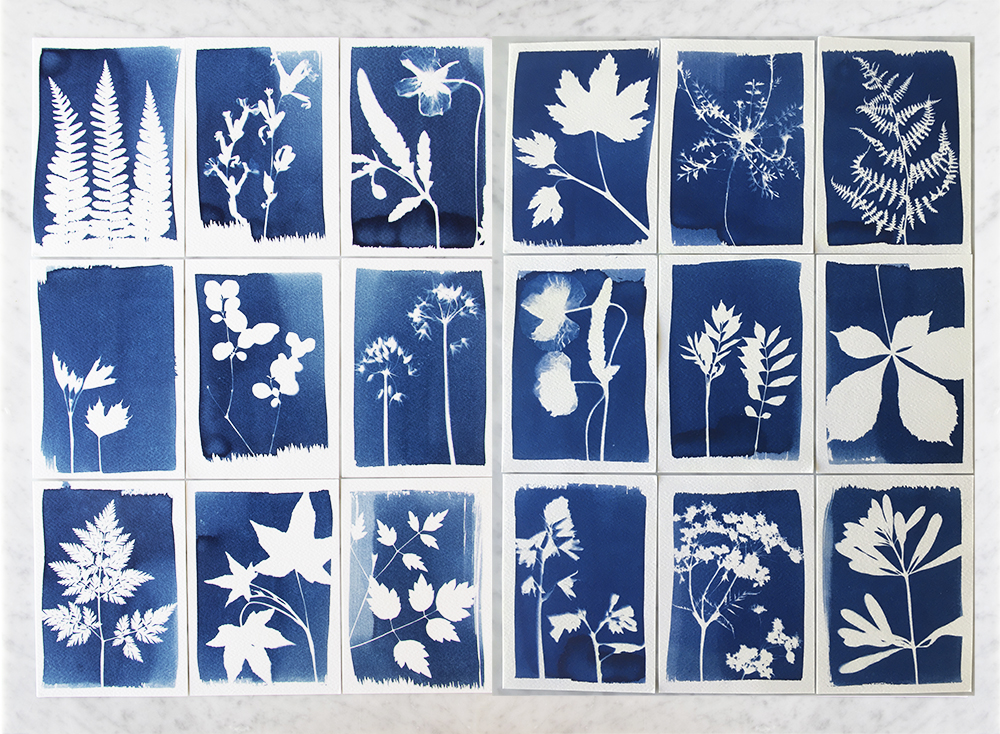Cyanotype is a photographic printing process that produces a cyan-blue print. Engineers used the process well into the 20th century as a simple and low-cost process to produce blueprints.
The cyanotype process, also known as the blueprint process, was first introduced by John Herschel in 1842. Sir John was an astronomer, trying to find a way of copying his notes.
One of the first people to put the cyanotype process to use was Anna Atkins, who in October 1843 became the first person to produce and photographically illustrated a book using cyanotypes. She was a pioneering figure in photographic history, having produced the first book to use photographic illustrations.

The classical form of cyanotype is that the paper is coated with a solution of a light-sensitive mixture of two chemicals – the light-sensitive iron(III) complex with a oxidizable polybasic carboxylic acid, usually citric acid or oxalic acid, and hexacyanoferrate(III).
A number of photographers still use cyanotype photography today, including Mike Ware and John Dugdale.

How To create Cyanotypes
Pre-prepared cyanotype paper
A piece of cardboard
Acrylic or glass sheet
Bulldog clips – or you can use masking tape or sellotape instead
An interesting range of objects to create your print from
You then place your objects onto the piece of prepared paper and then place in the sun. You then leave in the sun for a couple minutes and wash the paper in water. Once the paper has dried the cyanotype is made.
